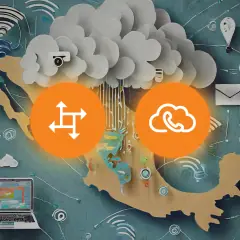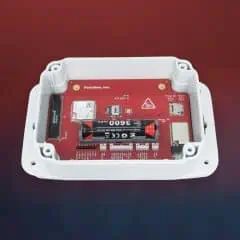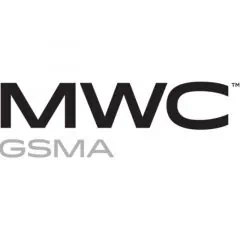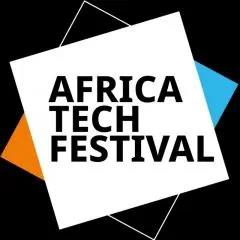
2017 was the year when Bitcoin entered public consciousness, and many had a chance to regret not investing early enough. Things have cooled off some in 2018; now the question is, “What is going to remain of the 2017 cryptocurrency surge in 2019 and afterwards?”.
Bitcoin (and other cryptocurrencies) is just one manifestation of the blockchain technology, which enables maintaining a public, distributed and tamper-resistant “ledger” of transactions. It has much broader applications than just cryptocurrency; it will be around when the “bitcoin hangover” is nothing but a memory.
The Bitcoin future is in discussion and forecasts, but blockchain technology is here to stay for good and be a part of our lives. Using the decentralized management of call routing via blockchain technology allows for efficient and secure cooperation of various telecom operators. It is such a major change for the telecom organization and operating costs — so there is no way around it. Operators should join it sooner than later.
Oleg Khovayko, CTO of Emerсoin
Emercoin and PortaOne have joined together to apply blockchain technology to disrupt the current status quo in the telecom industry, where worldwide phone call routing is controlled by a small set of large, established players. Right now, every phone number in the world is registered with one of the incumbent operators on the SS7 network. SS7 was created in the 80s to route calls, originated on analog phone lines, between telecoms. When someone anywhere in the world dials a number, the call is sent to one of the big operators who “owns” that number.
The operator then passes the call to an actual CSP (Communication Service Provider – e.g., MVNO or hosted IP PBX provider) that delivers the call to the subscriber. This is a relic from the old days of “copper” interconnections between subscribers and carriers, which still allows incumbent operators to set arbitrary prices.
The idea that smaller operators (or even individuals) around the world must be able to exchange calls directly via Internet, thus eliminating the interconnection cost, is not new. Several attempts were made to establish such “VoIP federations”— and there is even a protocol called ENUM (RFC 6116) that makes it easy to look up the location of call’s final recipient using the same principle as DNS (protocol that converts a domain name, such as “abc.com”, into an actual IP address of the web server). None of these attempts were successful. The question is why?
When using a peer-to-peer (P2P) call exchange, a telecom equipment (softswitch, IP PBX or VoIP gateway) attempts to route every outgoing call through the exchange, but if the number is not registered there or not accessible via the exchange, then it proceeds to route the call via traditional PSTN network. This requires resources and slightly increases a call connection time. To justify this and start delivering tangible cost-savings, there must be a decent chance that a number dialed will be reachable via a peering network. Strength is in numbers: there must be millions of phone numbers reachable via such a P2P network.
This implies tens of thousands of smaller telco operators joining together and updating their subscribers’ data. All previous attempts at forming VoIP federations assumed a single centralized authority to verify and manage number ownership and routing data. The traditional approach of building “one database to rule them all” failed because it could not handle the administrative overhead of dealing with that many independent requests.
Why is the solution proposed by Emercoin and PortaOne different? Because it uses blockchain technology for distributed management of routing data. When someone attempts to add or change the routing information for a phone number, it is verified and then “signed” by one or more authenticators. Multiple independent “authenticators” (entities who validate the ownership of the number and thus the right to change the routing information) can participate in the network, each offering various methods of verification with differing levels of security.
The least secure method would be a simple confirmation via SMS / phone call — and then it can go all the way up to formal verifications of legal documents. This eliminates the administrative bottleneck, and Emercoin’s platform can scale up to potentially support all phone numbers worldwide.
Emercoin service has been in production since 2013. It applies blockchain technology for various everyday IT projects such as secure remote server administration via SSH, password-less authentication with client SSL certificates or distributed management of DNS records. It is a distributed platform with resilience incorporated into the architecture. For nearly five years since its start, Emercoin service has been operating with no downtime at all.
In February 2018 at the Mobile World Congress in Barcelona, PortaOne presented results of the Emercoin interop project. PortaOne engineers set up phone registration and call delivery between two independent PortaSwitch systems via Emercoin’s ENUMER service to demonstrate how this makes the technology immediately available to any telco or virtual operator using PortaSwitch. It also served as a proof-of-concept to be used by any other wholesale VoIP operator or UCaaS provider using a different SIP softswitch or Cloud PBX.
This continues the path of disruptive innovation in the telecom space PortaOne has followed from its inception. In early 2000s, a team of individuals within Telenor struggled with every operator’s challenge: buy vs. build. One possible approach was to invest in a commercial software, get a “black box” and then be at the vendor’s mercy in terms of flexibility or delivery schedule for new functionality. Another approach was to develop one’s own solution using a mixture of open-source components and code written from scratch. Just like the “stone soup” fairytale, these projects initially seemed very low-cost, but this approach was very labor intensive, so the total cost quickly added up. Therefore, both options had fundamental drawbacks.
So PortaOne was created with a goal to offer telecom operators a seemingly impossible combination of the two: a commercial carrier-grade system that can handle agile development and customizations. PortaBilling was the first commercial telecom BSS & OSS where the license was unlimited in terms of subscribers, calls, etc., and the source code was supplied to customers by default. Fifteen years later with more than 450 operators in 90 countries, it seems this was the right thing to do!
Back then, VoIP technology changed the world of telecommunications. It gave millions of people the ability to communicate at a reduced cost or completely free. Now we witness the next evolution wave, which is related to blockchain — the changes are going to be no less profound. It will change many of the existing processes to be more efficient and fair — processes such as exchanging call routing information, publishing of tariff data or real-time cost settlement via smart contracts.
Andriy Zhylenko, CEO of PortaOne
Besides the global use case of saving money on outgoing phone calls by going to another operator in the ENUMER network, you find additional applications of blockchain — smaller in scope but with immediate financial benefits. For instance, an operator, who is currently the owner of a toll-free number, pays per-minute fees for each incoming call originating from a PSTN. But by using direct inbound VoIP routing via ENUMER, this owner can drastically reduce operating costs for call centers using toll-free numbers.
Another opportunity for operators is to become authenticators on the ENUMER network, and, therefore, earn revenue (in traditional monetary funds or cryptocurrency) for performing automated verification (e.g., by an IVR call). When a variety of authenticators are available, a communication service provider (CSP) can choose its preferred set of “trusted” authenticators and only use routing information signed by them, thus balancing the potential for cost-savings and the risk of incorrect call routing.
For more information about ENUMER call routing and other applications of Emercoin blockchain technology, please contact Emercoin.
Learn more about applying blockchain for cloud telecom platform at: https://www.portaone.com/solutions/blockchain.
About Emercoin
Emercoin is a cryptocurrency and decentralized blockchain platform for a wide range of trusted distributed services. Distinctive features of Emercoin are high reliability, robustness and three-in-one hybrid mining (PoW+MergedMining+PoS). The Emercoin platform is a leader in practical, non-financial applications on blockchain, and already runs bundles of services: network security services EmerSSL / EmerSSH, decentralized domain system EmerDNS, counterfeit solution EmerDPO, and the VOIP solution ENUMER, to name a few. Much like Bitcoin or the internet, Emercoin is not a formal company. Rather, it is a technological platform and an existing consortium of companies and persons who, together, develop Open Source technologies.

















